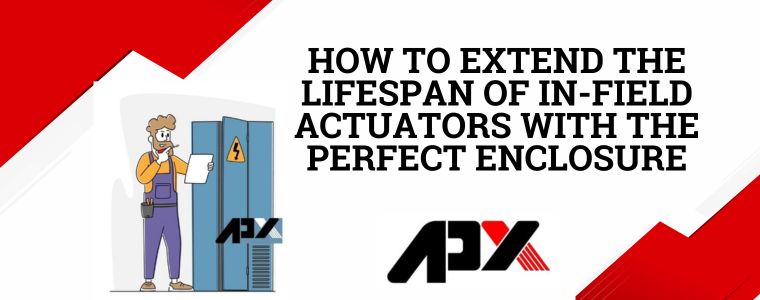Actuators play a crucial role in various industries, powering the movement and operation of essential machinery and equipment. However, these in-field actuators face numerous challenges that can significantly shorten their lifespan if not properly addressed. From harsh environmental conditions to mechanical stress, there are many factors that can lead to premature failure. That’s why it’s essential to take proactive measures to protect and extend the lifespan of these actuators. One of the key ways to do so is by using the perfect enclosure, which acts as a shield against the elements and safeguards the integrity of the actuators. In this article, we will explore the role of enclosures in protecting actuators and provide tips on selecting the right enclosure for optimal longevity.
1. Understanding the role of enclosures in protecting actuators
1.1 The purpose of enclosures
Imagine going outside during a rainstorm without an umbrella – you’d quickly get drenched and potentially face damage. Similarly, actuators left exposed to the elements can suffer from corrosion, moisture ingress, and other forms of environmental damage. Enclosures serve as the much-needed umbrellas for actuators, providing a protective barrier against dust, water, extreme temperatures, and other potential hazards. By shielding the actuators from these external factors, enclosures help prevent premature failure, reduce maintenance costs, and prolong the lifespan of in-field actuators.
1.2 Types of enclosures commonly used
Enclosures come in various shapes, sizes, and materials to cater to different application requirements. Some common types of enclosures include:
– Metal enclosures: These are often made of stainless steel or aluminum, known for their durability and resistance to corrosion. Metal enclosures are ideal for environments where robust protection is required, such as heavy industries or outdoor installations.
– Plastic enclosures: Plastic enclosures offer a lightweight and cost-effective solution for protecting actuators. They are suitable for less demanding environments and can provide ample protection against dust and light splashes.
– Explosion-proof enclosures: For hazardous environments where there’s a risk of explosive substances, explosion-proof enclosures are a must. These enclosures are designed to contain and prevent sparks or ignition sources from reaching the atmosphere, ensuring safety and compliance with stringent regulations.
2. Selecting the right enclosure: Factors to consider
2.1 Environmental conditions
Choosing the right enclosure begins with understanding the specific environmental conditions in which the actuators will operate. Factors such as temperature extremes, moisture levels, exposure to chemicals or dust, and the presence of potential impacts should be carefully evaluated. This knowledge will help determine the level of protection required, guiding the selection of the most suitable enclosure material and design.
2.2 Material and construction
The material and construction of the enclosure are crucial for ensuring durability and protection. As mentioned earlier, stainless steel and aluminum enclosures offer excellent resistance to corrosion, making them suitable for harsh environments. However, factors like weight, cost, and aesthetic preferences should also be taken into account when choosing the material.
Additionally, consider the construction features such as ingress protection (IP) rating, sealing mechanisms, and robustness of the enclosure design. These factors ensure that the enclosure can effectively shield the actuators from environmental threats while withstanding mechanical stress.
2.3 Size and compatibility
When selecting enclosures, it’s crucial to consider the size and compatibility with the actuators. The enclosure should provide enough space to accommodate the actuators comfortably, without constraints that might impede their movement or functionality. Furthermore, compatibility with mounting options and any additional accessories, such as cable glands or ventilation systems, should also be considered.
3. Ensuring proper installation and maintenance of enclosures
3.1 Installation techniques for enclosures
Proper installation of enclosures is vital to maximize their protective capabilities. Follow manufacturer guidelines and use appropriate mounting techniques, ensuring a secure and watertight seal. Avoid shortcuts or improvising during installation, as this can compromise the effectiveness of the enclosure.
3.2 Regular maintenance and inspection
Even with the best enclosure in place, regular maintenance and inspection are necessary to ensure continued protection. Periodically check for any signs of damage, corrosion, or ingress. Clean the enclosure and perform necessary repairs or replacements as needed. By staying proactive with maintenance, you can address issues early on and prevent any potential damage to the actuators.
In conclusion, extending the lifespan of in-field actuators requires proactive measures, and enclosures play a crucial role in ensuring their protection. By understanding the purpose of enclosures, considering factors like environmental conditions, material, and size, and taking care of proper installation and maintenance, you can significantly enhance the longevity of actuators and reduce downtime and replacement costs. So, don’t let your actuators face the elements alone – give them the perfect enclosure they deserve!5. Monitoring and controlling environmental factors to optimize actuator lifespan
4.1 Temperature and humidity control
Maintaining the right temperature and humidity levels is crucial for the longevity of in-field actuators. Extreme temperatures can cause thermal stress and affect the performance of the actuators. Similarly, high humidity can lead to corrosion and moisture-related issues. By monitoring and controlling these environmental factors, you can ensure that your actuators operate optimally and have a longer lifespan.
4.2 Dust and debris management
Actuators in the field are constantly exposed to dust and debris, which can accumulate and impair their functionality. Regular cleaning and proper enclosure design can help prevent dust and debris from infiltrating and causing damage to the actuators. Implementing filters and protective covers can be effective in keeping unwanted particles at bay, extending the lifespan of your actuators.
4.3 Protection against water and moisture
Water and moisture are notorious adversaries of actuators. They can cause rust, short circuits, and other electrical issues. Employing waterproof enclosures and seals can provide a barrier against these threats. Additionally, proper drainage systems and regular inspections can help identify and address any potential water or moisture ingress, safeguarding your actuators against premature failure.
5. Implementing preventative measures to mitigate wear and tear
5.1 Lubrication and sealing
Just like a well-oiled machine, your actuators need proper lubrication to minimize friction and reduce wear and tear. Regularly lubricating the moving parts and ensuring effective sealing can enhance the lifespan of your actuators. Remember, a little lubrication goes a long way in keeping your actuators running smoothly.
5.2 Vibration and shock absorption
Vibrations and shocks can cause significant stress on actuators, potentially leading to failure. Implementing shock-absorbing materials and proper mounting techniques can help mitigate these risks. By minimizing vibrations and shocks, you can extend the lifespan of your actuators and enhance their overall performance.
5.3 Electrostatic discharge protection
Electrostatic discharge (ESD) can wreak havoc on delicate electronic components within the actuators. To prevent ESD-related damage, it’s essential to implement proper grounding and shielding measures. Using ESD-safe materials and following best practices for handling and storing can significantly reduce the risk of ESD-related failures, ensuring a longer lifespan for your actuators.
6. Troubleshooting common issues and addressing actuator failures
6.1 Identifying common problems
Actuators can encounter a range of issues, including power supply failures, mechanical failures, and control system malfunctions. By familiarizing yourself with common problems specific to your actuators, you can quickly identify and address any emerging issues, minimizing downtime and preventing further damage.
6.2 Troubleshooting techniques
Having a systematic approach to troubleshooting can save you time and effort when resolving actuator problems. Performing diagnostics, checking connections, and testing components can help pinpoint the root cause of the issue. It’s also essential to consult the manufacturer’s documentation or seek expert advice when troubleshooting complex problems.
6.3 Addressing actuator failures
When actuator failures occur, it’s important not to panic. Actuators are replaceable components, and often, a failure can be remedied by simply replacing the faulty unit. Following the manufacturer’s guidelines for replacement and repair procedures can ensure proper installation and minimize the risk of future failures. Remember, even the most reliable actuators can fail occasionally, but with the right approach, you can get them up and running again in no time.
In conclusion, the proper selection and utilization of enclosures are essential for extending the lifespan and ensuring the optimal performance of in-field actuators. By understanding the role of enclosures, considering environmental factors, and implementing preventative measures, industrial professionals can effectively protect actuators from wear and tear. Moreover, regular maintenance, monitoring, and troubleshooting are crucial for identifying and addressing potential issues promptly. By following the best practices outlined in this article, professionals can significantly extend the lifespan of in-field actuators, enhancing productivity and minimizing costly downtime. With the perfect enclosure, these invaluable components can operate reliably in even the harshest field conditions, delivering consistent performance and maximizing operational efficiency.




